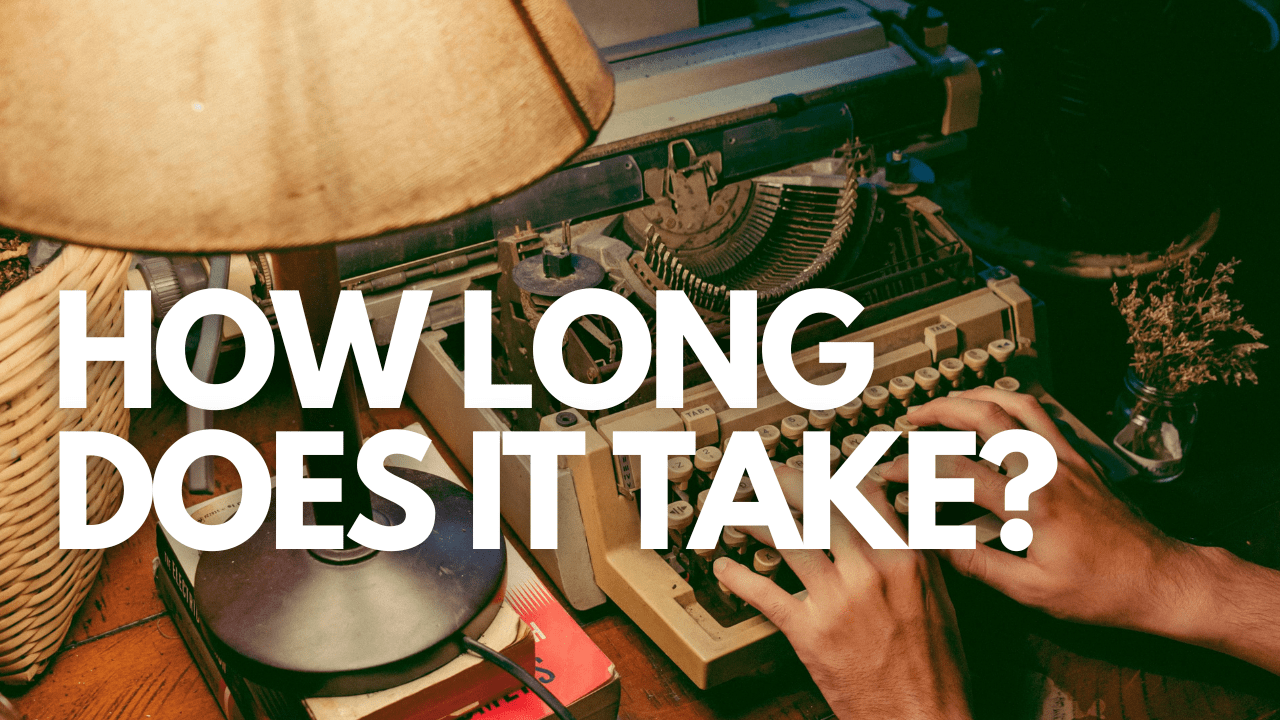If there is anything that can make or break a story, its characters. Poorly written, uninteresting, unrealistic, or inconsistent characters can turn readers off from your story within a few short pages. This article reviews the good character development questions that you should ask yourself to build a world full of rich and diverse people. Not just characters that are like cardboard cutouts.
Think back to a book that you started reading but did not finish. What was the main problem that made you put that book down? It seems that 9 out of 10 times it is because you did not like the character you were reading about. Sometimes this happens during stories with multiple viewpoints where you love a few but hate the others. Nothing is more frustrating than fighting your way through a chapter because you need to get to the next viewpoint character.
Here are tips, tricks, and examples of ways you can create better characters that make your audience actually care. Once you can get someone to care about what happens to your character, then you can truly begin telling the story you want to tell.
Physical Characteristic Questions
The first thing you should do when writing a character is understand what they look like. Not only will this help you overcome description inconsistency, but it will help you get a solid picture of the character in your mind. If you do not have a clear picture of what the character looks like, neither will your reader.

There are several ideas regarding physical characteristics that are worth thinking about. Orson Scott Card, in his book Characters and Viewpointexpresses his feelings that one should do as little as possible to define the physical characteristics of the viewpoint character and by doing so you let the reader place themselves deeper into their shoes. He explains that in a book he wrote, he wrote no description for his female protagonist and found that both his editor and his agent saw the main character as a reflection of themselves. Although there was no set description, they were able to create a clear picture of the character in their heads.
Jim Butcher, author of The Dresden Files and The Codex Alera has posted several articles where he details his writing processes. He expressed that TAG’s and TRAITS are great tools to use as descriptors for your characters. TAG’s are words that you pin to a character to describe what they look like to the reader. It is both obnoxious to read and to write full character descriptions over and over when a character enters any given scene. Using a word or two to describe them, you are able to associate a character with a specific description or idea. TRAITS, like TAG’s are words assigned to a character but instead of outlining physical characteristics, they are associated with props or decorations hung on the character for the reader’s benefit. What your character things is important to keep on them as well as how they dress are as important, if not more-so, as what their body looks like.
Regardless of the approach you are looking to take, understanding what your character looks like is often the first step in defining who they are. For how many people are not shaped somewhat by appearance, both in how others see them and how they see themselves.
Character Development Questions About Your Character’s Physical Appearance:
- What is their shape? (height, weight, body composition, ect)
- What is their hair color and how is it styled?
- What do their eyes look like?
- Do they have any distinguishing facial or body features?
- What is their Race/Ethnicity?
Character Flaws
New York Times bestselling author Brandon Sanderson had taught in his online lectures that flaws are often more interesting than strengths. Flaws can drive conflict, and conflict drives story. There is a reason that characters like Batman are innately more interesting than Superman. Although we all wish we could be a Superman, these kinds of characters are not relatable and can be extremely boring to read about. For example, there are three kinds of Superman stories. First, someone comes along who can hit harder than superman. Second, Superman loses his powers and has to get them back. And Third, Superman’s struggle to feel normal and have meaningful relationships, especially with Lois Lane.

You can ask yourself, which Superman story is the most interesting? If the movies are any indication, the Christopher Reeve films from the 1970’s and 1980’s are more beloved than the new renditions and the DCEU. After examining why this is, it seems clear that the odd, goofy, and relatable Clark Kent, adds a great dynamic to the Christopher Reeve Superman. The lack of a Clark Kent in Man of Steel, made it harder for audiences to connect with the character as portrayed by Henry Cavil. Superman’s relatable struggle to find his place in normal society has proven to be the more compelling side to his story. We understand what it is like to not fit in while we don’t understand what it is like to be a man of steel.
It seems a lot can be learned by looking at popular characters, understanding what they are not good at, and showing the reader how the characters work around that. There are several different ways to create limitations for your character including physical and mental handicaps.
Physical and Mental Handicaps
Handicaps are limitations you put on your character that are a consequence of environment or circumstance which is out of the character’s control and can not be changed. For example, Mat Murdock (Daredevil) is blind. This is a handicap and a limitation that the character can not change. However, his skills as a superhero are derived from what he can do despite this limitation. Handicaps can add an interesting dynamic to your character and should be included when possible.
Once again returning to the man of steel himself, a perfect example of someone with no physical handicap is Superman. The perfect, all powerful being does not make for the most compelling read. Without weakness like Kriponite, Superman would be invincible. Even then, it’s still difficult to make this character compelling. If your character is always perfect, does not struggle, and does not have a limitation they have to work with rather than solve, you are putting your story at risk of being filled with Supermen. There doesn’t seem to be a need to drone on about this example further.
Personality Questions
People watch stories more for who the protagonist is than for what they look like. Although appearances are a great starting point, the more important side of building a great character is creating a good personality that fits both them and their story. There is a reason James Bond is not a timid anti-social shut-in. Just like Bilbo isn’t a headstrong adventurous warrior. Who your character is will ultimately determine the story you are going to tell.

There is a reason that so many people like to read horoscopes. The Zodiac signs all have detailed descriptions of the average personality and a lot of people feel they can relate. If you are unsure where to turn to find a personality that would fit your character the best, perhaps you should consider looking into the personalities of the Zodiac.
The internet is the perfect resource to do a little research and this is a helpful tool, especially to get started. By using this tool, you are able to get a realistic description of a person and personality traits which will feel real. Most people agree with the majority of what is described under their Zodiac sign; and though there are always things that do not fit, people are willing to disregard the discrepancy in favor of the whole. This is actually good. You should not use this tool, or any tool, without understanding that there is no right way to apply it. Use your own creativity, you are a writer after all, and build upon the foundations available.
Understand Your Characters
Knowing who your character is allows you to show how they react to the events that transpire around them. In writing, your characters should act in a relatable manor which is consistent with audience expectations. People are complicated, but they are typically consistent with a set of motivations and basic moral principles. Characters typically are written more consistent that how people truly act, since a sporadic character with an ever changing personality doesn’t feel real in fiction though it may reflect reality.
Don’t forget that your character needs to learn and grow and that who they are will change because of that. Who you are as an individual is most likely different than the person you were five years ago and extremely different from who you were ten years ago. Use this growth to your advantage and leave plenty of room for your character to learn and to grow.
Character Development Questions to Ask About Your Characters Personality:
- Are they introverted or extroverted?
- How do they see themselves?
- How do they want to be seen by others?
- What do they fear most?
- What do they want most out of life?
History Questions
You need to know where the character has been if you want to figure out where they are going. By understanding things from your character’s past, you can better understand who they are and why they look like they do. This is one of the more tricky parts since not all of the information you write down about your character’s past or history is going to end up in the book. But you need to understand the relationships your character has formed with others before the story began, so that during the story they can interact in realistic and believable ways. The simple idea of how your protagonist met their best friend can be a vital part of developing a good character.
Character Development Questions to Ask About Your Characters Past:
- What kind of family do they come from?
- Who are their friends?
- Who are their enemies?
- What was their childhood like?
- What is their best and worst memory?
Motivation Questions
Most readers like characters that are active and not passive. It is ultimately more interesting to read about a protagonist that is engaging in the plot and story then one that is pulled along. When a character is actively engaging in the plot and moving it forward, the story is usually far more enjoyable. This being said, it is impossible to create an active protagonist without a motivation.

Motivations are hard because they change throughout the story. Because good characters are like real people, they don’t always understand their motivations. This is good. It is interesting to watch a character discover who they are and what they truly want. But just because the character doesn’t know what they want doesn’t mean YOU, the author, should not.
Real people have complicated motivations and often our motivations contradict. Knowing what is important to your character, what their morals are, and how they see the world will help you to create realistic motivations which will go beyond the scope of most newbie writers.
Another great tool for motivation is to understand what your character’s desire most, and discover why they can not have it. No-one really desires something they can have to the point where they will risk life and limb to get it. There is a reason that they say money doesn’t buy happiness. For the same reason we do not feel content with the things we already have, our characters need to want something they do not have and can not easily obtain.
Character Archetypes:
Archetypes are common in storytelling and much like tropes, they have been overused. Aside from having a clear Protagonist and Antagonist, archetypes are more often than not a hindrance to your character than a help. If you have ever read a story that has a romance which didn’t feel real, you could most likely attribute that to an author who wrote a character based primarily on an archetype. Creating a character, like in a romance, just to be the love interest, and not giving them a role outside the story, will create a terrible character.
Character archetypes are a tool which can help you create characters and get to know the common people who populate the stories similar to the one you are trying to write.

What truly makes a good character?
Perhaps the most important question that every writer needs to answer. This answer seems to be different to each author and each character. Stories are filled with hundreds of characters, big and small, important and unimportant, good and bad. However, the best stories are filled with characters that people care about. Having good, well defined, and developed characters is important only if you can get your audience to care. Without this emotional response, did you truly succeed at telling a story worth experiencing?



